Diving
For the daring and thrill-seeking adventurers out there, bridge and cliff jumping offer the chance to push your limits and experience the rush of jumping from great heights into the unknown. Whether you're a seasoned pro or a first-timer, the rush of leaping off a bridge or cliff is an experience you won't soon forget.
It's important to note that safety should always be a top priority when engaging in activities like bridge jumping or cliff diving. Make sure to research the location beforehand and check the water depth to ensure it is safe to jump. It's also a good idea to have a trusted friend or guide with you to help keep an eye on things.
So why do people do this? For some, it's the thrill of the jump and the rush of adrenaline that comes with it. For others, it's the opportunity to test their limits and push themselves out of their comfort zone. Whatever your reason may be, just make sure to be cautious and always prioritize safety.
So how do you get started jumping off of bridges and cliffs? Start by doing your research and finding a reputable location with experienced guides or jumpmasters. Make sure to follow all safety guidelines and procedures, and don't be afraid to start small and work your way up to bigger jumps. With the right preparation and mindset, bridge and cliff jumping can be an exciting and thrilling experience.
Just remember: safety first! Do your research, check the water depth, and always have a trusted friend or guide with you. Now go out and make that unforgettable leap!"
Here's some of our favorite diving platforms
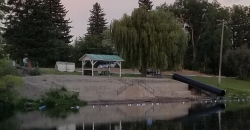
St. Anthony Sandbar
Saint Anthony, Idaho
0.2 miles SE of Saint Anthony, IdahoCLOSED. //// Sand Bar Update //// ***As of 27 June 2019 *** The Sand Bar is still closed to ALL swimming, please do not cross the boundary line. We are closely monitoring the river flows...
Dive, Swim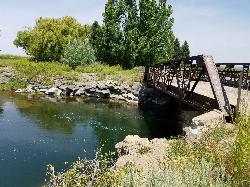
Twin Bridges
St. Anthony, Idaho
6.6 miles NE of St. Anthony, IdahoThere's an old abandoned bridge next to the one currently in use. The water is pretty deep underneath and offers two distinct levels to jump from. There's a little rope swing under the bridge...
Dive, Swim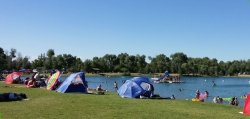
Jefferson County Lake (AKA Rigby Lake)
Rigby, Idaho
2.0 miles N of Rigby, IdahoRigby Lake has long been a favorite swimming hole for those in the area. The county has taken it well under its wing and made it a buzzing spot on any warm summer day. Along with the long standing...
Camp, Canoe, Dive, Kayak, Sled, Swim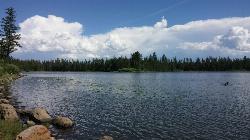
Horseshoe Lake
Ashton, Idaho
18.3 miles E of Ashton, IdahoHorseshoe Lake is hidden back in the Targhee National Forest. It's a beautiful lake with plenty of lily pads. The road to get there is well maintained and there are many options for pull-outs...
Camp, Canoe, Dive, Swim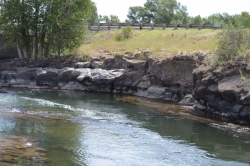
Fall River Bridge
Ashton, Idaho
6.6 miles SW of Ashton, IdahoRight off Highway 20, there's a great spot to swim, swing, and dive. There's pullouts for parking right next to the bridge. There's a rope swing under the railroad bridge and a little...
Dive, Swim 11.6 mi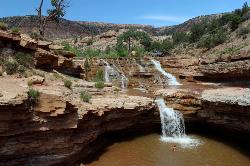
Toquerville Falls
La Verkin, Utah
6.6 miles N of La Verkin, UtahNothing says desert oasis quite like driving for 5.5 miles through winding sandy roads to find a favorite swimming hole with ledges, falls, and even a ladder to climb up to the best jumping spots....
Dive, Hike, Mountain Bike, Swim 0.6 mi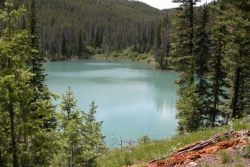
Packsaddle Lake
Tetonia, Idaho
9.3 miles W of Tetonia, IdahoPacksaddle is one of the less well known lakes/trails in the area. If you've got a good offroad vehicle, you can probably make it all the way to the end of the road, otherwise, it's just an...
Dive, Hike, Mountain Bike, Snowshoe, Swim
Pool Point
Elkhorn City, Kentucky
1.6 miles SE of Elkhorn City, KentuckyPool Point is a popular and adventurous swimming spot in Breaks Interstate Park. Here there is a sandy beach, and a long rope swing for jumping in the water. This spot is famous for the train bridge...
Canoe, Dive, Hike, Kayak, Swim 1.3-4.3 mi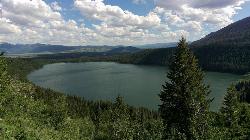
Phelps Lake
Jackson, Wyoming
10.2 miles N of Jackson, WyomingThe Phelps Lake trail, located in Teton National Park, Wyoming, is in one of the most scenic locations of the park. Usually overshadowed by nearby Jenny Lake, it can often be missed by visitors of...
Backpack, Camp, Dive, Hike, Swim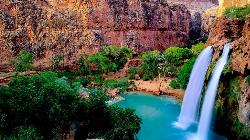
Havasu Falls Trail
Flagstaff, Arizona
89.4 miles NW of Flagstaff, ArizonaBackpack, Dive, Horseback, and Swim near Flagstaff, Arizona
Backpack, Dive, Horseback, Swim- Plan Ahead and Prepare. Know the regulations and special concerns for the area you'll visit. Prepare for extreme weather, hazards, and emergencies. Schedule your trip to avoid times of high use. Visit in small groups when possible. Consider splitting larger groups into smaller groups. Repackage food to minimize waste. Use a map and compass to eliminate the use of marking paint, rock cairns or flagging.
- Travel & camp on durable surfaces. Durable surfaces include established trails and campsites, rock, gravel, dry grasses or snow. Protect riparian areas by camping at least 200 feet from lakes and streams. Good campsites are found, not made. Altering a site is not necessary.
- Dispose of waste properly. Pack it in, pack it out. Inspect your campsite and rest areas for trash or spilled foods. Pack out all trash, leftover food and litter. Deposit solid human waste in catholes dug 6 to 8 inches deep, at least 200 feet from water, camp and trails. Cover and disguise the cathole when finished. Pack out toilet paper and hygiene products. To wash yourself or your dishes, carry water 200 feet away from streams or lakes and use small amounts of biodegradable soap. Scatter strained dishwater.
- Leave what you find. Preserve the past: examine, but do not touch cultural or historic structures and artifacts. Leave rocks, plants and other natural objects as you find them. Avoid introducing or transporting non-native species. Do not build structures, furniture, or dig trenches.
- Minimize campfire impacts. Campfires can cause lasting impacts to the environment. Use a lightweight stove for cooking and enjoy a candle lantern for light. Where fires are permitted, use established fire rings, fire pans, or mound fires. Keep fires small. Only use sticks from the ground that can be broken by hand. Burn all wood and coals to ash, put out campfires completely, then scatter cool ashes.
- Respect wildlife. Observe wildlife from a distance. Do not follow or approach them. Never feed animals. Feeding wildlife damages their health, alters natural behaviors, and exposes them to predators and other dangers. Protect wildlife and your food by storing rations and trash securely. Control pets at all times, or leave them at home. Avoid wildlife during sensitive times: mating, nesting, raising young, or winter.
- Be considerate of other visitors. Respect other visitors and protect the quality of their experience. Be courteous. Yield to other users on the trail. Step to the downhill side of the trail when encountering pack stock. Take breaks and camp away from trails and other visitors. Let nature's sounds prevail. Avoid loud voices and noises.

















